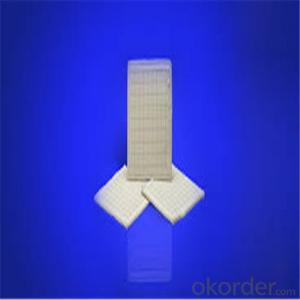When it comes to heating, ventilation, and air conditioning (HVAC) systems, one of the critical factors to consider is the airflow. This is where the term ‘CFM’ comes into play. CFM stands for ‘Cubic Feet per Minute,’ and it’s a measure of the volume of air that moves through your HVAC system. But, calculating CFM for flexible duct systems can be a bit tricky, especially if you’re not familiar with the process. In this article, we’ll break down the steps and make it as easy as pie.
Why CFM Matters
CFM is essential because it directly impacts the efficiency and effectiveness of your HVAC system. If you have too little airflow, your system won’t cool or heat your space adequately. On the other hand, too much airflow can lead to energy waste and increased utility bills. So, getting the CFM right is a balancing act that’s worth mastering.
Understanding the Basics
Before we dive into the nitty-gritty, let’s clarify some basics. Flexible duct systems, also known as flex ducts, are made from flexible materials and are used to connect various components of your HVAC system. They’re convenient because they can bend around obstacles and fit into tight spaces. However, they also have some unique challenges when it comes to calculating CFM.
The Role of Friction in Ducts
Friction is the enemy of airflow. In flexible ducts, it’s even more critical because the material can create more resistance than rigid ducts. The longer and more turns a duct system has, the more friction it will generate, which in turn reduces the CFM. Understanding this is crucial when you’re trying to calculate the right amount of airflow for your system.
Factors Affecting CFM
Several factors can affect the CFM in a flexible duct system. These include the length of the duct, the number of turns, the size of the duct, and the type of insulation used. Each of these factors can either increase or decrease the friction in the duct, thus affecting the CFM.
The Calculation Process
Now, let’s get to the fun part – the calculation. Here’s a simplified version of the steps you’ll need to follow:
1. Measure the Duct’s Dimensions: You’ll need the diameter of the duct and the length of the duct run. Don’t forget to account for any turns or bends.
2. Determine the Friction Loss: Use a friction loss chart or a calculation tool to determine the friction loss per 100 feet of duct. This will vary based on the factors mentioned earlier.
3. Calculate the Static Pressure: Static pressure is the force needed to overcome the friction loss. It’s usually measured in inches of water column (in. w.c.).
4. Determine the Fan’s Static Pressure: Your HVAC system’s fan will have a static pressure rating. This is the amount of pressure the fan can generate to push air through the ducts.
5. Calculate the Available Static Pressure: Subtract the friction loss from the fan’s static pressure to find out how much pressure is left to push the air through the ducts.
6. Determine the Airflow: Finally, use the formula: Airflow (CFM) = Available Static Pressure / Friction Loss per 100 feet.
Tips for Accurate Calculations
– Use Accurate Measurements: A small error in measuring the duct’s dimensions can lead to a significant difference in your CFM calculation.
– Consider All Factors: Don’t overlook any factors that might affect the friction loss.
– Double-Check Your Work: It’s always a good idea to double-check your calculations to ensure accuracy.
– Consult a Professional: If you’re unsure about any step in the process, don’t hesitate to consult with an HVAC professional. They can provide valuable insights and help you get the most accurate CFM calculation for your system.
The Importance of Regular Maintenance
Once you’ve calculated the CFM for your flexible duct system, it’s essential to remember that regular maintenance is key to keeping your system running efficiently. Dust, debris, and other obstructions can accumulate over time, leading to increased friction and reduced CFM. Regular cleaning and inspection can help prevent this.
Wrapping Up
Calculating CFM for flexible duct systems may seem daunting at first, but with a bit of patience and the right approach, it’s a skill you can master. Remember, getting the CFM right is crucial for the performance and efficiency of your HVAC system. So, take the time to learn the process, and you’ll be well on your way to a comfortable and energy-efficient home.
In conclusion, understanding and calculating CFM for flexible duct systems is an essential skill for anyone looking to optimize their HVAC system’s performance. By following the steps outlined above and keeping in mind the factors that affect CFM, you can ensure that your system is providing the right amount of airflow for your needs. And, as always, don’t be afraid to reach out to the experts if you need a helping hand.

